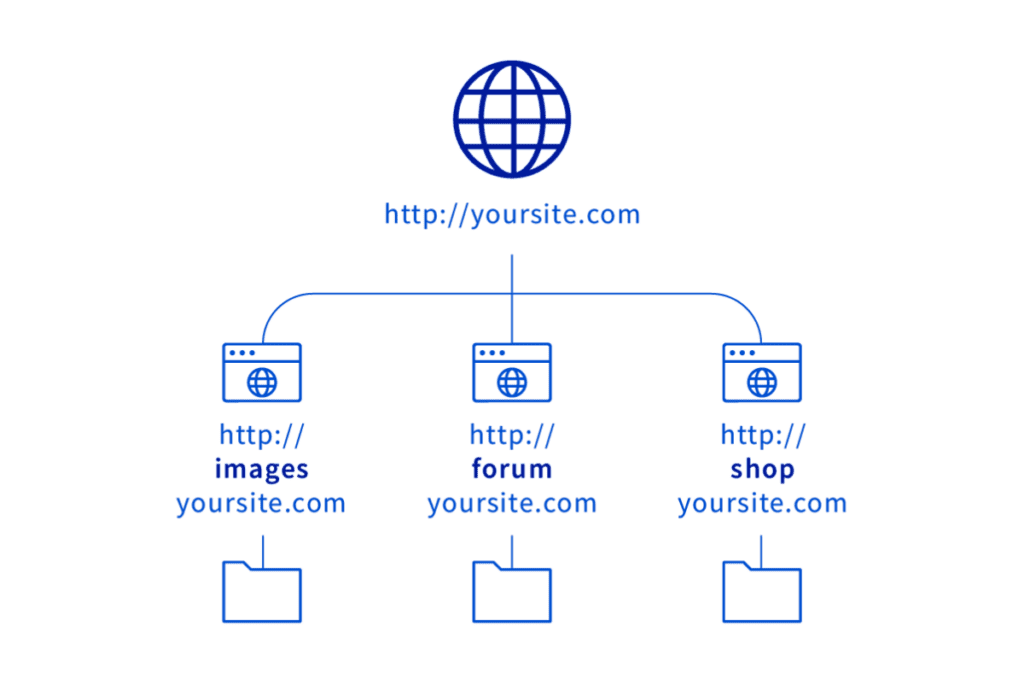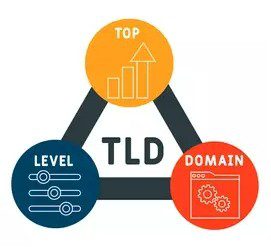Which is the right website structure: TLD, Subdomain, & Subfolder:
Getting the right website structure, is essential to reach your customers. There are 3 types in general: Top-level Domains (TLDs), Subdomains, and Subfolders. In the following, we will discuss the matter, ups and downs of each.

Picking the right website domain structure is important, as it also determines the way your content is translated best. And ultimately affects your SEO as well. Here’s a list of the different structures:
- Top-Level Domains – example.com & example.de
- Subdomains – de.example.com
- Subfolders – example.com/de
TLDs are intended for specific countries. That domain replaces “.com” in the URL with the code for the targeted country. For example, “.es” is the country code for Spain, so “langify-app.com” would be displayed as: “langify-app.es“
A subdomain also uses country specific codes, but they’re added to the beginning of the URL as part of it. The domain then looks like this “es.langify-app.com”
Subfolders are an extension within your website. The translated version is linked through your original one, with the URL looking like this: “langify-app.com/es”
1. Top-Level Domains (TLDs) Structure
TLDs are specifically intended for specific countries. Such a domain will replace the “.com” in the URL with the code for the targeted country. I.e. for Spanish it will display “.es”
Why choose TLDs?

TLDs use the specific country codes intended for each country, so your users will be used to seeing them on other websites. They will know the content is meant for them, so it will give a sort of personalization to your website. You look extra professional, too, so that’s a plus! And it also signals your website’s language to search engines, so it will rank better.
The fact that TLDs are separate URLs than your original website URL is also a great point because you install a separate CMS. That way, you can put different people in charge of different versions of your site. The separate CMS is also more secure because a potential leak doesn’t allow access to your other webpages.
2. Subdomains Structure
A subdomain also uses country specific codes, but they’re added to the beginning of the URL as part of it. You’d end up with a domain that looks like this: de.example.com
Why choose subdomains?
Like with TLDs, with subdomains you install a separate CMS. For the reasons we already mentioned, a separate CMS can be very beneficial. You can also imagine how much more organized having a separate CMS would allow you to be.
Further advantages of using subdomains include saving on TLD acquisition fees. You also skip the legal obligations and special terms you might need when using on a top-level domain.
3. Subfolders Structure
Unlike TLDs and subdomains, subfolders are just extensions within your website. The translated version of your website is linked through the original one, with the URL looking like this: langify-app.com/es
Why choose subfolders?
One advantage of subfolders is that they use backlinks to take users across the website. This will boost your SEO as it keeps the traction within the same website. And, as is the case with subdomains, you don’t have to go through the TLD hassles.
“However beautiful the strategy, you should occasionally look at the results.”
Sir Winston Churchill
Best choice for your site?
The three of these multilingual content website structures succeed in getting you to your main goal: adding multiple languages to your Shopify store. They only differ in the way they make that happen.
Regardless of what website structure you choose, however, having multilingual content will help boost your website’s reach to new markets, help attract new and diverse customers, and help achieve a higher number of sales. So don’t let confusion on which structure to choose stop you from going for it. Translating your website will always be worth it. And if you still need some help making the decision, here’s a recap.
Basically, if you want to save on fees, save time setting an additional site up and do less work, you should choose between subdomains and subfolders. Subfolders are super easy to set up, as they’re just another extension within your website. Still, subfolders might overcrowd your website and URL as well, so if you want to make your work less messy and more organized, go with subdomains.
At the end of the day, though, setting up a TLD isn’t all that tough. You can easily get someone to help or quickly learn which formalities you need. And the charge is basically negligible when it comes to the advantages of having separate web pages set up. So, if you want the most professional URL option, along with the benefits of installing a separate CMS, go with Top-Level Domains (TLDs). You won’t regret it.
There you have it. Remember, the most important part of any opportunity is to just get started. Adding multiple languages to your store is a must, no matter how you do it. So start translating… The rest will follow.

“Business is the profession. Harmony the passion.”
Connecting people and customers is the key. In e-commerce & general. Tones & Music are a wonderful communication tool. Only 7 tones define it and are understood all around the world
